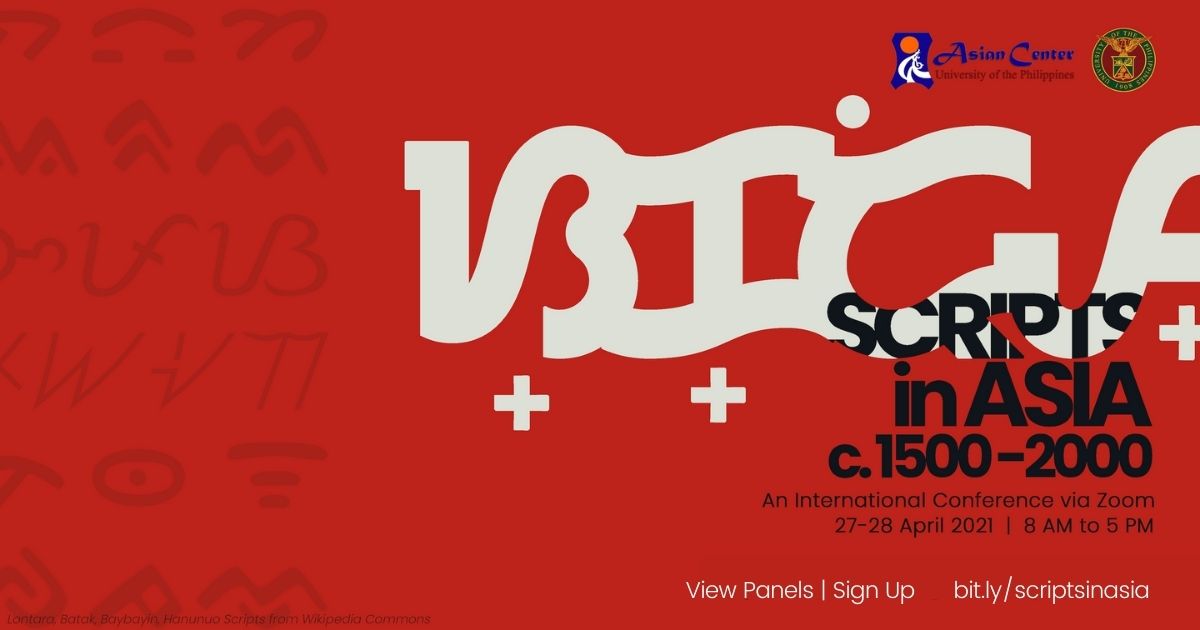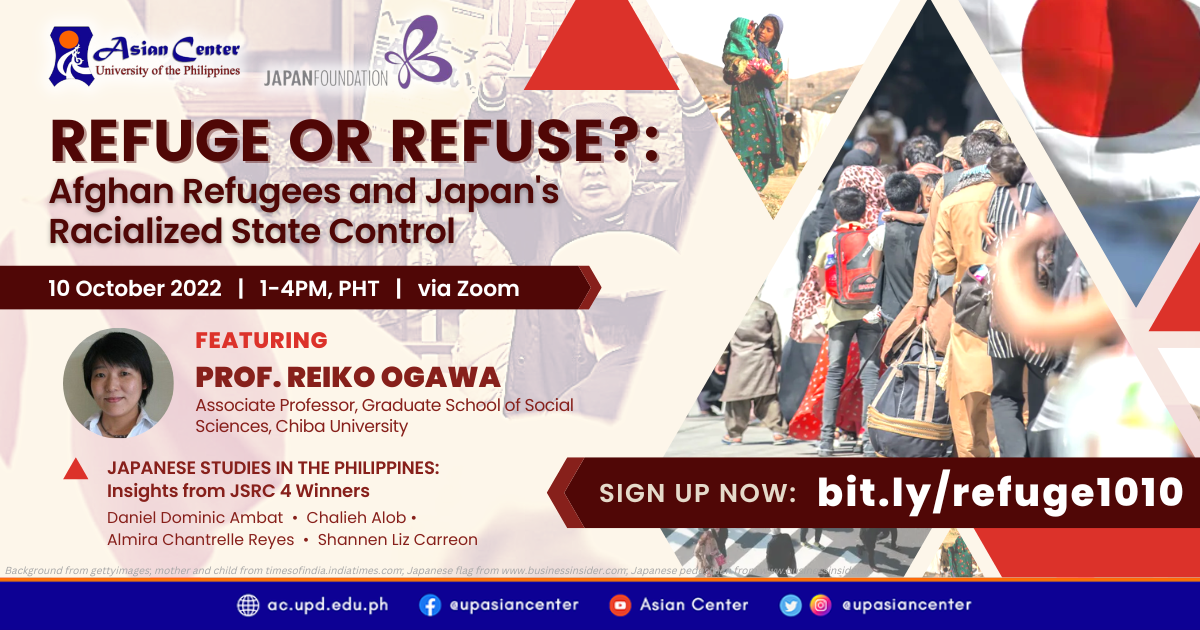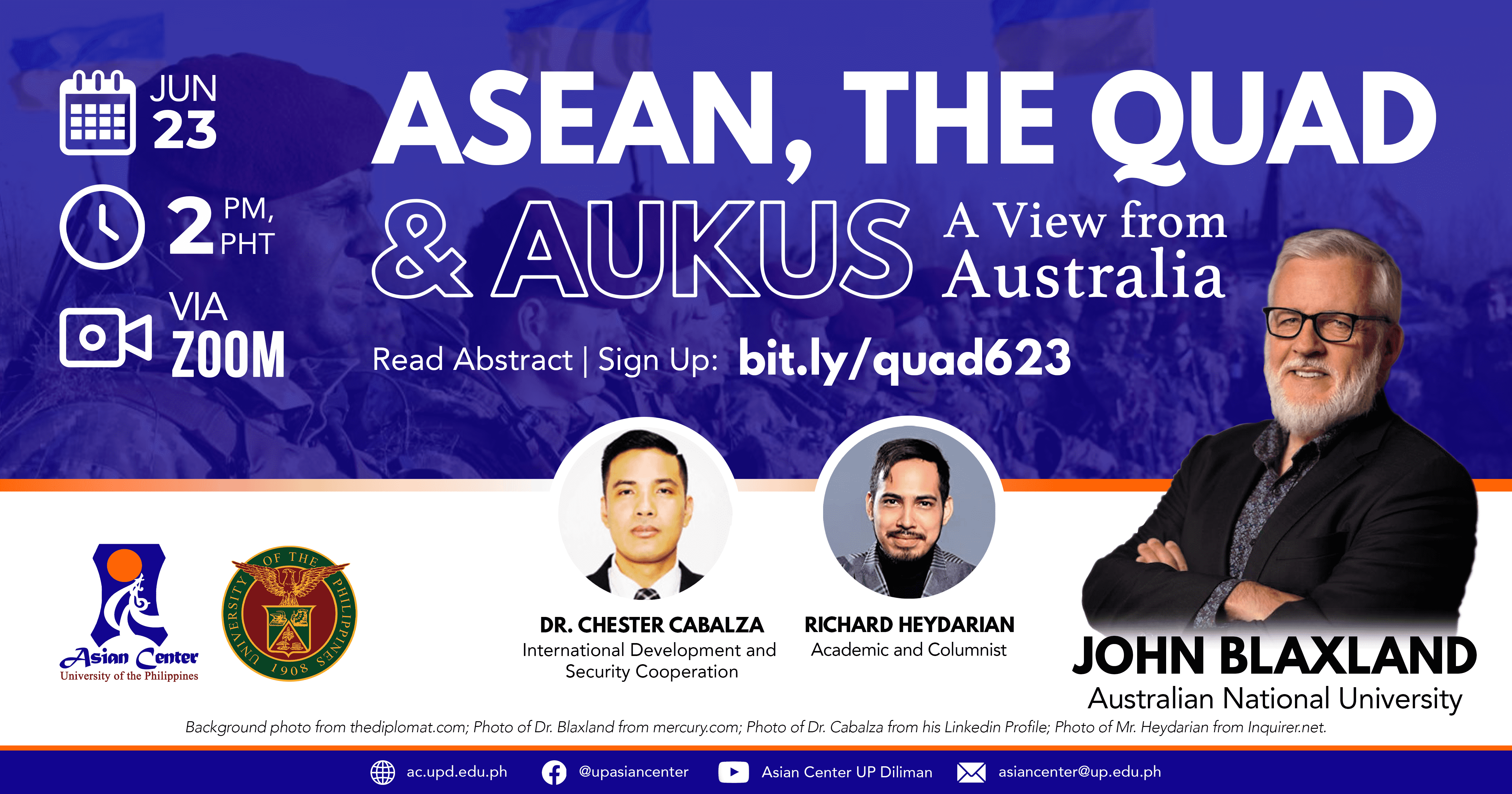
Eighteen presentations from the international conference, Scripts in Asia, c. 1500–2000, are now available in the UP Asian Center’s YouTube Channel. Only those who consented to have their videos uploaded are available for viewing. Organized by the Asian Center, University of the Philippines Diliman, the event was held from 27–28 April 2021 via Zoom. Individual presentations will are hyperlinked and will pop up upon clicking.
Watch Playlists on YouTube: Day 1 • Day 2
CONFERENCE DAY 1
Panel 1: Scripts, Art, and Identity
Islamic Calligraphy as Javanese Muslims’ Belief on God’s Existence and Artistic Expression in Sacred Buildings
Hee Sook Lee-Niinioja, Ph.D.
The Making of Self-Knowledge in Tanah Jawi: Newspapers, Science and Roman Scripts, 1850s–1930
Nia Deliana
Panel 2: Scripts, Conversion, and Islamic Education
Conversion and the Construction of the Poetic Self: Exploring Sadek Ali’s literary works in the Sileti Nagari Script, 19th C.E.
Madhubanti Chanda
Moral Values in the Kitab Pengajaran Manuscript
Bayu Aji Prasetya and Delima Novitasari
Panel 3: Jawi–History and Collection
Jawi, Baybayin and Latin Scripts in 16th-Century Manila
Isaac Donoso
How the Collector/Manuscript Owner Define Their Collections
Fiqru Mafar
Panel 4: Scripts and Cross-Cultural Contact
Internal and External Factors in the Fate of Scripts
Christopher R. Miller, Ph.D.
Mappila Literary Awakening of the 16th century: An Analysis on the Islamisation of Malabar Muslims through Mala, Mawlid, and Sabeena
Habeeb Moosa
The Malay-Arabic Bible in Javanese Christian Church "Kyai Sadrach" Purworejo, Indonesia
Laras Aridhini
CONFERENCE DAY 2
Panel 5: Scripts, State, and Society
Old Sundanese Script in Inscriptions and Manuscripts in the 1500s: Diplomacy of the Last Sunda Kingdom and the Portuguese
Sinta Ridwan
Current Debate on Sexism in Spanish and Chinese Languages
Nerina Piedra Molina, Ph.D.
Panel 6: Scripts and Technology
Transcribing Manipravala: The Interplay of Time, Tradition and Technology
Vinodh Rajan, Ph.D. and Suganya Anandakichenin, Ph.D.
Sundanese Calligraphy as Artistic Expressions of Identity
Agung Zainal Muttakin Raden, M.Ds
Panel 7: Scripts: Revival and Continuity
Between the Brahmans and the Baptists: A History of Kaithi Script in Nineteenth-Century India
Anubha Anushree, Ph.D.
The Tagalog Chronicles: A Study on the Entanglement of the Baybayin’s Historical Precedence and its Revival
Tyrone Kit B. Agres, Diane Marie U. Concepcion, and Christopher Van A. Deita
Panel 8: Scripts and Christian Missionaries
From Syllabary to Alphabet: A Spanish Attempt at Transformation
Damon L. Woods
Questioning the Strategies behind the Creation of Chữ Quốc Ngữ (Vietnamese Romanized Script)
KIM, Bảo, Đặng
Analysis of an Invented Writing System for the Shanghainese Language
Logan Simpson
ABOUT THE CONFERENCE
The European arrival in Asia in the 16th century was a turning point not only in the political trajectories but also in the writing traditions of Asian states and societies. In maritime Southeast Asia for instance, indigenous literacy in Indic-derived scripts was long widespread in societies such as the Batak (si-sia-sia script), Tagalog (baybayin) and Bugis (lontara). However, increasing European influence occurring alongside Islamization engendered the transition to Latin or Jawi (Arabic-derived) scripts. This conference intends to explore the impact of European presence in the various writing traditions of Asia. In what ways were certain languages and especially scripts privileged by colonial states? How is the transition from one writing script to the other reflected in the sources? How do postcolonial societies across Asia view or instrumentalize their varied epigraphical, textual, and codicological traditions? Visit the conference page to view abstracts, full list of presentations.
The UP Asian Center offers M.A. degrees in Asian Studies with four fields of specialization: Northeast Asia, Southeast Asia, South Asia, and West Asia. The Center also has an M.A. program in Philippine Studies that allows students to major in Philippine society and culture, Philippine foreign relations, or Philippine development studies. The Center offers a Ph.D. program in Philippine Studies in conjunction with the College of Arts and Letters and the College of Social Sciences and Philosophy. For an overview of these graduate programs, click here. The Asian Center also publishes Asian Studies: Journal of Critical Perspectives on Asia, the latest issue of which can be downloaded at the journal's website. For other news and upcoming events at the Asian Center, click here.





